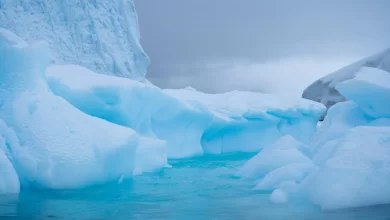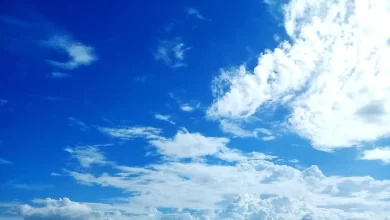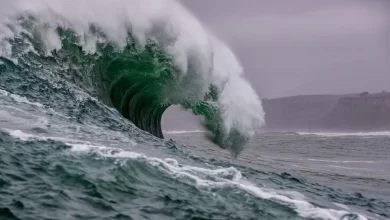The most common chemical element found on or on Earth is oxygen. It is one of the primary components of air and is required for the survival of all plants and animals. Scientists use symbols to represent chemical elements. O is the symbol for oxygen. One-fifth of the atmosphere is made up of oxygen. It also accounts for nine-tenths of water by weight and nearly half of the rock and sand in the Earth’s crust. So let’s Dive into these 30 Interesting facts about oxygen that will rock you.
- As early as 2.33 billion years ago, the Earth’s atmosphere saw the first large, irreversible influx of oxygen. The Great Oxygenation Event began during this time and was followed by significant increases later in Earth’s history.
- Cyanobacteria are the very first organisms that figured out how to make oxygen. These blue-green algae or microbes use photosynthesis to produce carbohydrates and oxygen by utilizing sunlight, water, and carbon dioxide.
- The symbol O represents oxygen on the periodic table of elements. It has an atomic number of 8 because its nucleus contains 8 electrons and 8 protons.
- All animals and plants on planet earth need oxygen to survive.
- The distinction between oxygen (O) and oxygen (O2) is that the former is an oxygen atom, whereas the latter is made up of two O atoms bound together to form a molecule, also known as oxygen. Oxygen is most commonly found as a diatomic gas. As a result, we write it as O2. The number of electrons in O and O2 differs; O has eight while O2 has 10. This implies that the latter has larger orbitals and loosely held outer electrons. As a result, O2 has a larger atomic radius.
- Three oxygen (O) atoms are linked together in an ozone (O3) molecule.
- UV-C light is entirely absorbed by oxygen molecules in the stratosphere and never reaches the Earth’s surface. UV-C breaks down oxygen molecules into oxygen atoms. These single atoms then react with other oxygen molecules to form ozone. As a result, these reactions increase the amount of ozone in the stratosphere.
- As pure oxygen is highly reactive, it will combine with anything to form oxides, and disconnected atoms have a strong tendency to form bonds, it is available as O2 rather than O. So if an oxygen atom has nothing else to combine with, it will combine with another oxygen atom to form an oxygen molecule.
- On 1st August 1774, Joseph Priestley Discovered Oxygen and answered the questions of how and why things burn.
- Oxygen is a non-combustible gas that aids combustion. A supporter of combustion is air or oxygen, which aids in combustion, and combustion is the chemical reaction that results in the release of heat and light energy.
- Oxygen (O2) is a gas that is a necessary component of air and for the survival of all living things. Colorless, odorless, and tasteless, it accounts for 21% of the Earth’s atmosphere.
- It’s a mixture of different gases. The air in Earth’s atmosphere is made up of approximately 78 percent nitrogen and 21 percent oxygen.
- Plants and trees convert Co2 with oxygen in the daytime with the help of photosynthesis. The majority of plants do not release oxygen at night as the sun is not there.
- Some of the plants that give oxygen even at night are Areca Palm, Snake Plant, Tulsi, Aloe Vera, Peace Lily, and Spider Plant.
- Some of the trees that intake Co2 and give back oxygen in the night are the Peepal and Neem trees.
- The melting point of oxygen is −218.4 °C (−361.1 °F). Whereas the boiling point is around −183.0 °C (−297.4 °F).
- The density of oxygen is 1.292 kg/m3, which is very close to the measured 1.205 kg/m3 density of air.
- While oxygen is colorless in its gaseous state, it is pale blue in its liquid state. Liquid oxygen aids in the treatment of altitude sickness, insomnia, and hangovers. It is lightweight and easily transportable.
- Oxygen exists in a range of colors, including red, pink, black, and orange.
- Liquid oxygen has a paramagnetic property. It is attracted by the magnetic field, but once the magnetic field is removed, it loses its magnetic properties.
- Although oxygen is not flammable, it can cause other materials that burn to ignite more easily and quickly. As a result, an oxygen-fueled fire can appear explosive.
- Water contains one-third of oxygen; without it, hydrogen gasifies and swells in volume. Oceans would disintegrate and bleed into space.
- Because of the aerating action of winds, oxygen dissolves in surface water. Oxygen is also introduced into the water as a byproduct of aquatic plant photosynthesis. Fish and other aquatic organisms cannot survive when dissolved oxygen levels fall below a certain level.
- Oxygen is the third most abundant chemical element in the known universe after hydrogen and helium. It is the second most abundant element in the Earth’s geosphere after iron and the most abundant element by mass in the Earth’s crust — at about 47% to 49%.
- As oxygen makes up about 20.3 percent of the atmosphere, the partial pressure of oxygen at sea level (1 atm) is 0.203 atm. Thus, at sea level at 20° C, the amount of dissolved oxygen at 100 percent saturation is 9.03 mg/L¹⁰.
- An average adult inhales and exhales approximately seven to eight liters of air in one minute. This equates to approximately 11,000 liters of air per day. Exhaled air contains about 15% oxygen, and inhaled air contains 21% oxygen (environmental composition). The lungs are able to absorb the difference.
- Henneguya salminicola, an 8-millimeter white parasite that infects the flesh of Chinook salmon, is the only animal that does not need oxygen to breathe from the atmosphere.
- There is very little breathable oxygen in space. An experimental astrophysicist at Syracuse University discovered that oxygen atoms cling tightly to stardust in a ground-based experiment. This prevents oxygen atoms from forming oxygen molecules by preventing them from joining together.
- Approximately 96 percent of human bodies are made up of four main elements: oxygen (65%), carbon (18.5%), hydrogen (9.5%), and nitrogen (0.5%). Water, proteins, and DNA are among the most prevalent and vital components in our bodies in which these elements can be found.
- Birds intake more oxygen than any other animals and even humans.As they fly and their bodies are well adapted for flight their lungs have evolved to be more efficient






